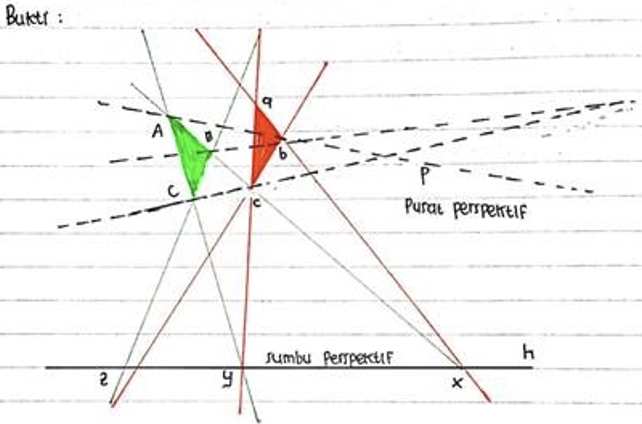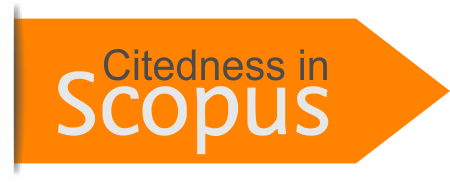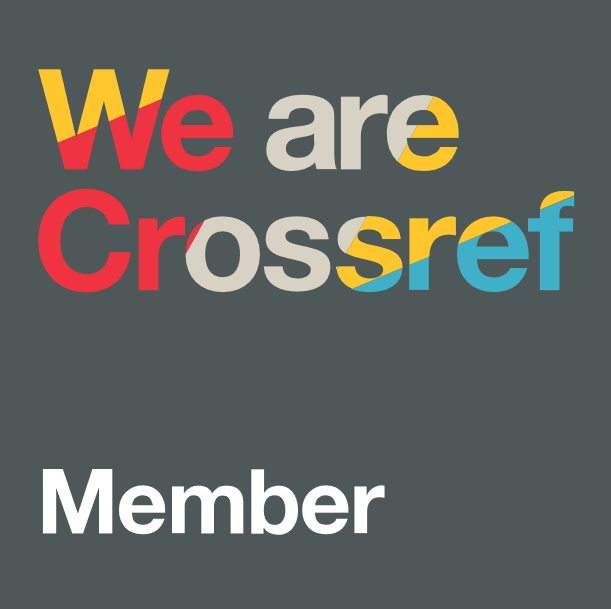Exploring mathematics history: Desargues’ contributions and perspectives of teacher candidates
DOI:
https://doi.org/10.31629/jg.v10i1.6961Keywords:
girard desargues, projective geometry, mathematical history, teacher candidatesAbstract
This research explores the contributions of Girard Desargues, a pivotal but often overlooked mathematician in geometry. The study aims to provide insights, inspire interest, and evaluate the understanding of prospective mathematics teachers regarding Desargues' contributions, particularly his work on projective geometry. Employing a qualitative approach, the research integrates a literature review and a case study. Literature data were sourced from academic journals and books, while the case study involved interviews with students from five mathematics education classes. Open-ended interviews assessed students' familiarity with Desargues and their ability to comprehend and apply his theorem. Data were analyzed through meta-analysis and thematic analysis. The findings categorize student responses into three levels: Medium of Desargues and Desargues Theorem, Intermediate Knowledge of Desargues and Desargues Theorem, and Low of Desargues and Desargues Theorem. The results underscore varying levels of awareness among future mathematics educators and suggest that integrating historical mathematical insights into education may support a deeper understanding of concepts.
Downloads
References
Andersen, K. (1991). Desargues' method of perspective its mathematical content, its connection to other perspective methods and its relation to desargues' ideas on projective geometry. Centaurus, 34(1), 44-91. https://doi.org/10.1111/j.1600-0498.1991.tb00688.x
Anglade, M., & Briend, J. Y. (2017). La notion d’involution dans le Brouillon Project de Girard Desargues. Archive for History of Exact Sciences, 71, 543-588. https://doi.org/10.1007/s00407-017-0196-5
Asmara, Y. (2019). Pembelajaran sejarah menjadi bermakna dengan pendekatan kontektual. Kaganga: Jurnal Pendidikan Sejarah Dan Riset Sosial Humaniora, 2(2), 105–120.
Briend, J.-Y. (2021). Mathématiques en perspective: Desargues, La Hire, Le Poîvre. Archive for History of Exact Sciences, 75(6), 699–736. https://doi.org/10.1007/s00407-021-00275-2
Cache, B. (2011). Desargues and Leibniz: In the black Box ‐ a Mathematical model of the leibnizian monad. Architectural Design, 81 (4), 90–99. https://doi.org/10.1002/ad.1273
Cortese, J. F. N. B. (2016). Leibniz E O paradigma da perspectiva. Cadernos Espinosanos, 34, 137.
Darsono, D. (2019). Meningkatkan keaktifan siswa dalam mata pelajaran sejarah dengan metode inquiry. Jurnal Sosialita, 12(2).
Desargues, G. (2011). Oeuvres De Desargues. https://doi.org/10.1017/cbo9781139058834
Fardian, D., & Dasari, D. (2023). The effects of problem-based learning on mathematical proficiency: A combined bibliometric analysis and meta-analysis review. Journal of Didactic Studies, 1(2), 99–113.
Fardian, D., Herman, T., Suryadi, D., & Prabawanto, S. (2024). Gamifying mathematics: A hermeneutic phenomenological study on role-playing games in linear equations. PYTHAGORAS Jurnal Pendidikan Matematika, 19(1).
Fardian, D., Suryadi, D., & Prabawanto, S. (2024). Students’ learning obstacles in solving mathematical proficiency tasks: A hermeneutic phenomenological study focused on algebra. Kreano, Jurnal Matematika Kreatif-Inovatif, 15(2).
Fardian, D., Suryadi, D., & Prabawanto, S. (2025). A praxeological analysis of linear equations in Indonesian mathematics textbooks focuses on the systemic and epistemic aspects. Journal on Mathematics Education, 16(1 SE-Articles), 225–254. https://doi.org/10.22342/jme.v16i1.pp225-254
Fardian, D., Suryadi, D., Prabawanto, S., & Hayuningrat, S. (2024). Research trends on early algebra in the middle school: A combined bibliometric and meta-analysis review. Jurnal Elemen, 10(2), 410–440.
Fardian, D., Suryadi, D., Prabawanto, S., Putri, A. D., & Qamariah, N. (2024). A half-century of didactic design in mathematics education: A bibliometric analysis. Jurnal Gantang IX, 1, 71–82.
Francisco, J. M., & Maher, C. A. (2005). Conditions for promoting reasoning in problem solving: Insights from a longitudinal study. The Journal of Mathematical Behavior, 24(3–4), 361–372. https://doi.org/10.1016/j.jmathb.2005.09.001
Gîrban, A. (2023). Desargues’ involution theorem: From history to applications. The Mathematical Gazette, 107(568), 44–55. https://doi.org/10.1017/mag.2023.6
Keshet, D., & Eidelman, M. (2017). Clinical utility of the taylor spatial frame for limb deformities. Orthopedic Research and Reviews, Volume 9, 51–61. https://doi.org/10.2147/orr.s113420
Lei, C., & Vourdas, A. (2018). Selective correlations in finite quantum systems and the desargues property. Journal of Geometry and Physics, 128, 118–127. https://doi.org/10.1016/j.geomphys.2018.02.013
Menger, K. (1936). New foundations of projective and affine geometry. Annals of Mathematics, 37(2), 456. https://doi.org/10.2307/1968458
Nurutami, A., Riyadi, R., & Subanti, S. (2018). The Analysis of Students' Mathematical Literacy Based on Mathematical Ability. https://doi.org/10.2991/miseic-18.2018.40
Putri, A. D., Juandi, D., Jupri, A., & Muchsin, S. B. (2024a). Mastering the TPACK framework: Innovative approaches by mathematics teachers. Jurnal Elemen, 10(3), 582–594. https://doi.org/10.29408/jel.v10i3.26311
Putri, A. D., Juandi, D., & Turmudi, T. (2024a). Blended Learning dalam Pembelajaran Matematika: A Systematic Literature Network Analysis. 7(3), 501–516. https://doi.org/10.22460/jpmi.v7i3.21992
Putri, A. D., Juandi, D., & Turmudi, T. (2024b). Realistic mathematics education and mathematical literacy: A meta-analysis conducted on studies in Indonesia. Journal of Education and Learning (EduLearn), 18(4), 1468–1476. https://doi.org/10.11591/edulearn.v18i4.21650
Putri, A. D., Juandi, D., Turmudi, T., & Reza, H. S. F. (2024c). Exploring students’ understanding of Pascal’s Mystic Hexagon Theorem within projective geometry. Jurnal Gantang, 9(1), 83–94.
Putri, A. D., Juandi, D., Turmudi, T., & Suparman, S. (2025). Blended learning and math achievement: A meta-analytic review highlighting the effectiveness and heterogeneity. Electronic Journal of E-Learning, 23(1), 113–128. https://doi.org/10.34190/ejel.23.1.3781
Putri, A. D., Yerizon, Y., Arnellis, A., & Suherman, S. (2024). Development of realistic mathematics education-based teaching materials to increase students’ mathematical literacy ability. AIP Conference Proceedings, 3024(1).
Rambe, K. N., & Asmin, B. S. (2019). Analysis of metacognitive skills in solving mathematical problems reviewed from students’ learning style. American Journal of Educational Research, 7(11), 780–793. https://doi.org/10.12691/education-7-11-5
Rulianto, R. (2019). Pendidikan sejarah sebagai penguat pendidikan karakter. Jurnal Ilmiah Ilmu Sosial, 4(2), 94–101. https://doi.org/10.23887/jiis.v4i2.16527
Scristia, S., Dasari, D., & Herman, T. (2023). Sentiment analysis of prospective mathematics teacher on reasoning and proof questions using Naïve-Bayes classification. Jurnal Gantang, 8(2), 155–165. https://doi.org/10.31629/jg.v8i2.6591
Sturm, T., & Zengler, C. (2011). Automated Deduction in Geometry. https://doi.org/10.1007/978-3-642-21046-4
Surya, E., Putri, F. A., & Mukhtar, M. (2016). Improving mathematical problem-solving ability and self-confidence of high school students through contextual learning model. Journal on Mathematics Education, 8(1). https://doi.org/10.22342/jme.8.1.3324.85-94
Swinden, B. A. (1950). Geometry and Girard Desargues. The Mathematical Gazette, 34(310), 253–260. https://doi.org/10.2307/3611025

Downloads
Published
Issue
Section
License
Copyright (c) 2025 Jurnal Gantang

This work is licensed under a Creative Commons Attribution-NonCommercial-ShareAlike 4.0 International License.

















